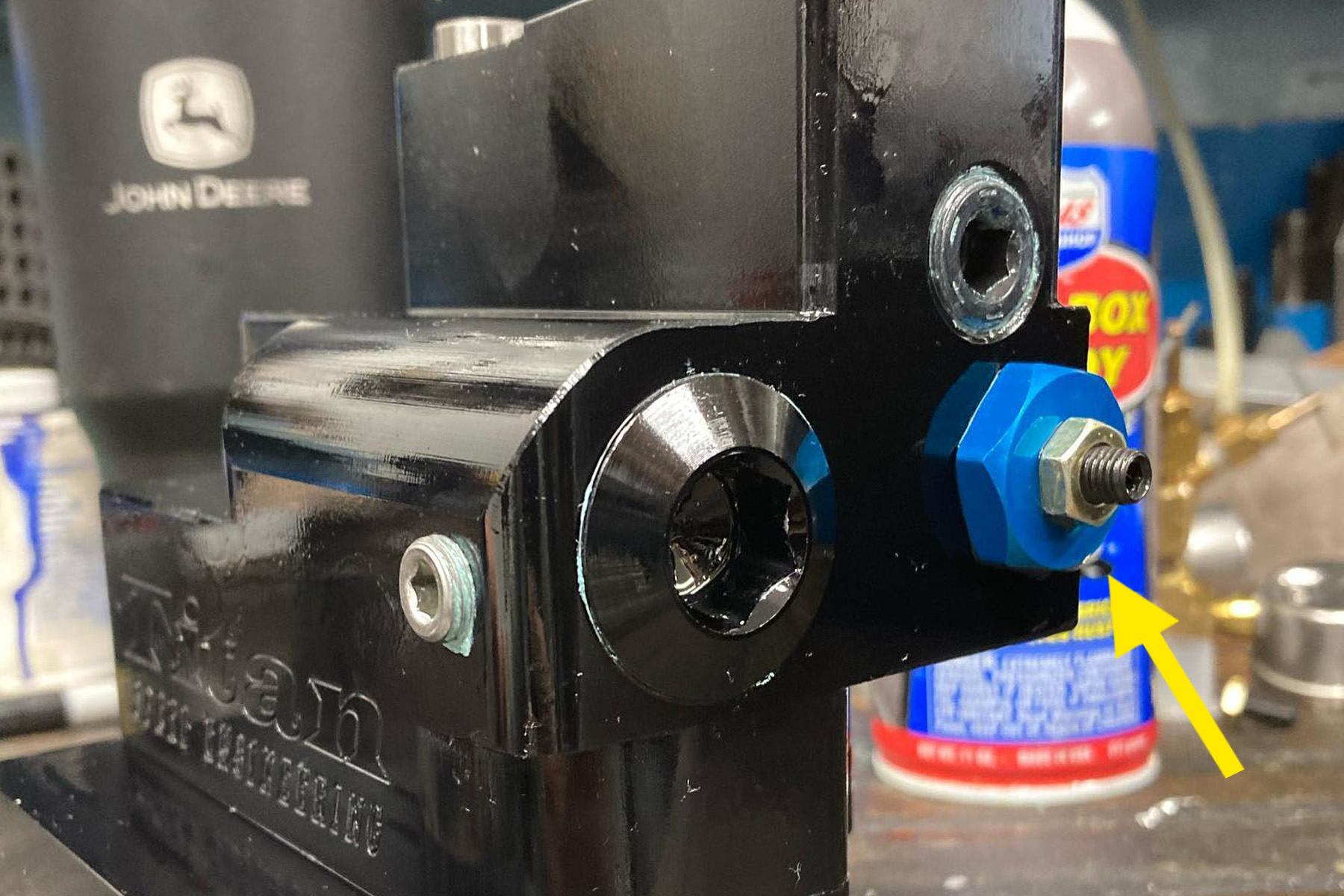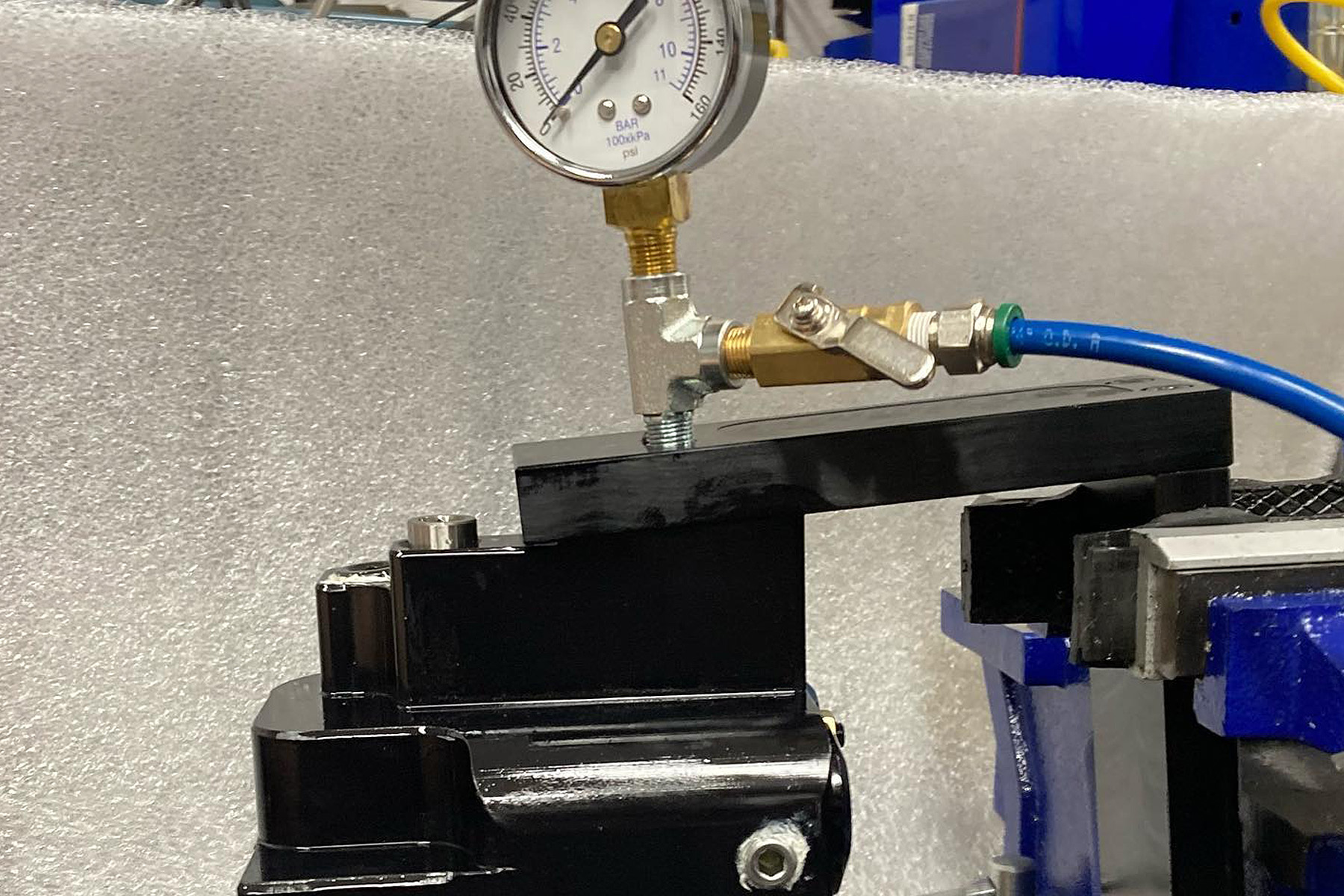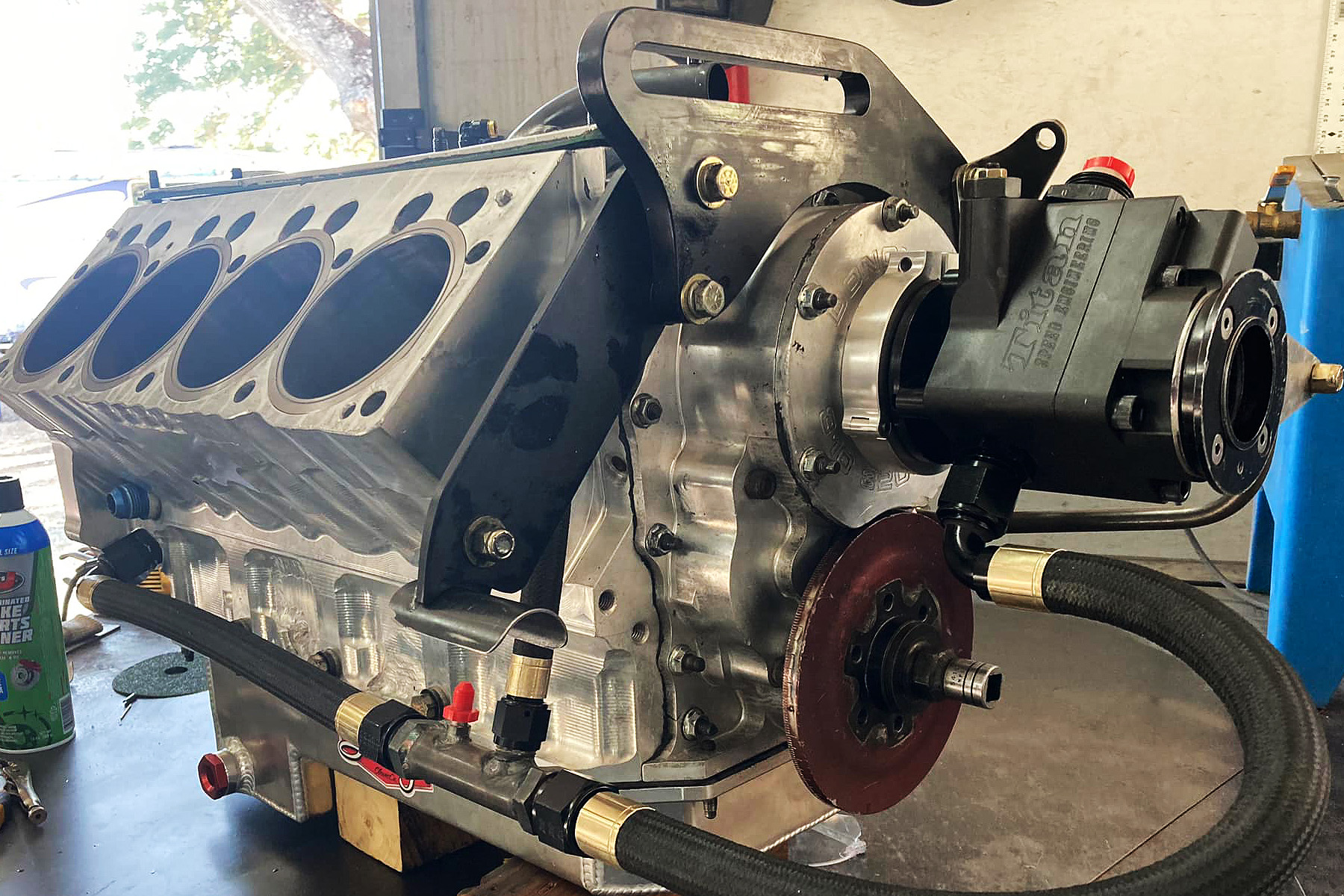Believing in a specific product enough to support it wholeheartedly has been a business leap for Krista and Shawn Van Horn. Titan Speed Engineering has been an innovator in hardcore racing engine hardware for decades, and this couple created a new facility to continue the brand’s familiar racing and performance gerotor oil pumps.
Titan’s original owners, Bob and Heather Sanders, were at the point of retirement when an unfortunate shop fire devastated the company, and the Sanders opted to step aside rather than rebuild. The Van Horns saw a valuable position in the marketplace for its pumps, and wanted the Titan name and oil pump designs to continue. As Van Horn tells, it was Scott Sykes, who worked for the Sanders, that is to be credited for digging through the rubble of the fire to retrieve what he could of the company’s engineering assets, and later reprogramming machines to continue production.
Spur Gear vs. Gerotor Fundamentals
Mind you—these are not just any oil pump; the gerotor name originates from combining the words GEnerating and ROTOR. Many late-model engine designs, like the Chevrolet LS and Ford Coyote engines, now incorporate gerotor pump designs onto their block face and crankshaft. However, those spin thier gerotor pumps at crank speed. Titan’s wheelhouse is creating gerotor oil pumps for 1960’s to today’s OEM and aftermarket wet sump oiling blocks as a step between common spur gear pumps and more exotic dry sump oiling systems. By taking the gerotor design, and spinning it at the traditional oil pump speed (half of crankshaft speed) a new level of efficiency can be achieved.
The Titan modular housing design has varied housing layouts and gear sizes. The gerotor-design pump mechanism is where the magic happens to defeat cavitation.
The gerotor pump can only be compared to a spur gear design as they rotate two driven gears inside the pump case. These two pump designs vary greatly in all other aspects. Oil is drawn from the reservoir in a spur gear pump and travels between the gear teeth as the gear teeth rotate.
Unlike a spur gear with a direct mesh of identical teeth, the gerotor’s internal gear is typically engineered with one tooth less than the outer. As the two gears rotate, a cavity between the two gears moves and pressurizes the oil. Between the inner and outer tooth mesh, there is always a contact surface that prevents oil from leaking from the cavity.
Oil is drawn through a spur gear pump as the gears rotate against the outer case. A high cavitation area is formed when the oil is pushed back at the intersecting gears. Still a two-gear design, the gerotor moves a cavity around the dissimilar gears, pressurizing the oil with less cavitation.
The merging cavity between these two gears creates the suction that draws oil from the pickup and pushes it into the engine as the inner and outer teeth converge. Since the gerotor does not have a direct mesh of two identical gears that lends to windage or cavitation, theoretically, the gerotor can create a more even flow than many standard-design spur gear oil pumps.
Even Oil Pressure and Flow
With cavitation comes what is defined as dwell. “Dwell is the overall cavitation and pulsation of the pressurized oil,” says Van Horn. “Especially at the RPM that racing engines operate, the oil pressure can pulse at different pressure levels. With this dwell, your crank and rod bearings may also be exposed to high-low pulsing oil pressure, affecting the oil’s ‘hydrodynamic wedge,’ which is the holy grail of how oil protects mating engine parts.”
As the gears come around and mesh on a spur gear oil pump , it actually knocks the pump backward a little bit as it displaces the oil. These pulsing harmonics create even more problems. – Shawn Van Horn, Titan Speed Engineering
Additional Pulsation Problems
“The oil pump pulsing can also mechanically back-feed through what drives the oil pump,” Van Horn explains. “Since the oil pump drive is typically routed from the camshaft and related distributor gears, these pulsing harmonics can be passed back through those components. Distributors, cams, and the cam and distributor gears have all experienced noted failures attributed to severe oil pump dwell.”
Regulators Within an Oil Pump
An oil pump constantly increases pressure output as engine RPM increases. The oil pump can exceed a pressure limit where too much pressure can adversely affect your oiling system. Typical OEM wet sump oil pumps use interchangeable springs to regulate pressure. When the oil pressure overcomes the spring, excess oil is bypassed back to the oil pan, and that peak pressure is maintained.
The Titan gerotor oil pump uses a set screw and spring combination that allows adjustability without spring changes. “We use a tight-tolerance bypass design with a spring backed by an adjustment screw to change pressure limits without interchanging springs,” Van Horn explains. “One turn of the set screw moves the pressure limit by approximately 5 psi. Generally, we can set the standard at 70 psi and easily take up to 200 psi pressures. If there is any unique pressure application, we then can use other spring options that are also adjustable.”
The precision machined gerotor is set in the pump housing. There typically is no sump pickup, as the gerotor is submerged at the pump's lowest depth. Different lengths in the upper section of the modular housing (arrows, at right) are factored into your oil pan depth.
When engine and pump RPM are below the maximum regulated pressure, the volume rating of an oil pump can assist the oil flow through the engine until peak regulated pressure is achieved.
Feeding Oil In The Best Way Possible
The new owners of Titan Speed Engineering are a prime example of a racer’s desire to protect against extreme bearing pressures with their own car, a nostalgia Top Fuel dragster.
“With more boost comes more detonation, which is definitely the case with a blown nitro powerplant. It is an entirely different beast. We want up to 150 psi or greater oil pressure. I’m currently at 150 psi, using heavy 70-weight nitro racing oil, and hitting 9,800 rpm. This is a worst-case scenario for cavitation. And I’m doing this with my own Titan pump I have had for quite some time,” Van Horn says.
A large adjuster on the side of the pump (arrow) can set your pressure regulator ranging typically from 70 to 200 psi. You can have Titan adjust your pressure settings in such instances as possibly a change in your bearing tolerances, or you can purchase a fixture to set your own pressures.
Most Titan Pro pumps have a large, integral pickup with over 13 square inches of screen area. A uniquely adjustable pressure regulator allows you to select virtually any pressure setting, from 50 to more than 200 psi.
Dual Feed to the Gerotor Pump
Yes, the gerotor oil pump can also experience some dwell, but to a much lesser degree. Still, Van Horn explains a revolution in the Titan gerotor pump design that further diminishes cavitation. “With two oil inlets instead of one, the gerotor can draw much more oil over the dwell span of each gerotor tooth. This additional oil alleviates cavitation when pressurized.”
The Van Horns compete with a nostalgia Top Fueler and have been a faithful customer of Titan Speed for years. With the noticeable void among racers for their gerotor oil pumps, they wanted the name and designs to continue their past success.
Pump Depth
Another point with a Titan pump is the location of the gerotor area within their wet sump oil pumps. Instead of a pickup tube, Titan’s billet aluminum housing is configured with the gerotor area submerged in the oil, close to the bottom of the oil pan.
“The gerotor is submerged to the lowest point in the pump, which keeps the gerotor pumping mechanism always under your oil level,” Van Horn explains. “Once the pressurized oil leaves the gerotor, it travels upward under pressure through the pump body. We have different heights of pump cases that match the depth of various pans.”
Van Horn insists that all materials used to machine their pump components are still American-made. He adds, "The aircraft-quality billet aluminum, hard anodizing, and various steels used are still sourced by suppliers that successfully worked with the original Titan Speed."
Van Horn points out another advantage of the submerged pump design. “For any extreme doorslammers, dragsters, to even my own nostalgia fuel car, the issue of tire-shake can crack or knock a standard oil pump sump-pickup out of the pump. A Titan pump has no delicate pickup to fail.”
Van Horn notes, “I can’t stress enough the hard anodizing process you see on our black pumps; it serves a far greater wearability benefit than just anodizing aluminum for visual looks.”

This unique racing engine block uses a remote sump rather than a submerged gerotor pump. The dual-feed inlet lines feed into the gerotor cavity from above and below. Providing oil to the gerotor from two points instead of one helps diminish any cavitation within the pump.
Technically, even though the new Titan has retained their previous owner’s proven designs, they have slightly improved its end products with new machine shop equipment and the latest Mastercam CNC software. “The previous company exceeded industry standards for machining,” says Van Horn. “We have taken this quality a small step higher.”
Rebuildable Engineering
Van Horn speaks of the rebuildable design that has always been a part of the Titan pump lineage.
“We do have customers that have purchased multiple engines over time, but they have always kept their Titan pump; they take it with them for the next build.”
Titan Speed Engineering designs all of its pumps with the ability to be rebuilt to the proper tolerances over time. Like many other major engine components, savvy racers will return their pumps to Titan for periodical rebuilding.
The Titan pump has a modular design that allows a combination of housing pieces to create different pump fitments. Many Titan pumps are submerged wet sump units, but they create many unique gerotor applications, like external pumps for Chrysler Hemi aftermarket blocks.
The Investment Factor
Some high-horsepower components are replaced over time and wear; others can be carefully used, maintained, and rebuilt indefinitely for a “good as new” result. Considering this hardware that pressurizes your critical oil supply, a rebuildable gerotor pump can be viewed as a long-term investment.
The spur gear pump serves your factory sedan or mild-performance vehicle well. When you raise the bar with rising engine RPM, bearing pressures, and more, forcing engine oil where it absolutely needs to be isn’t important, it is paramount.
By taking a time-proven oil pump design and modernizing it with a new type of pump gear, the Titan pumps reduce stresses on your oil-pump drive mechanisms and offer you much better oil delivery, which your engine will be grateful for.





































